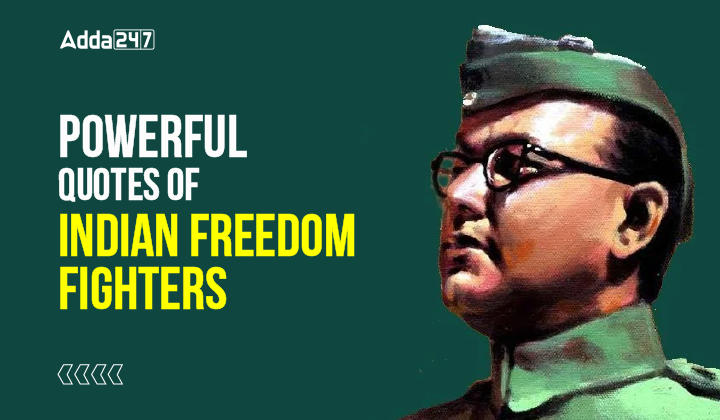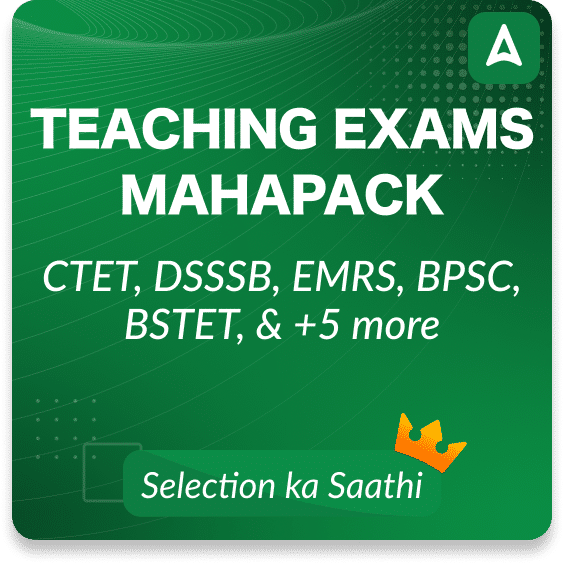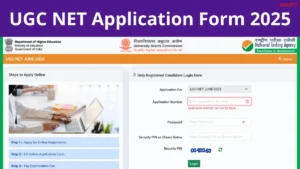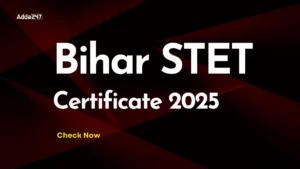Table of Contents
As India achieved its freedom and independence on 15th August 1947 at the stroke of midnight, this year India will celebrate its 77th anniversary. Independence Day and Republic Day are historically significant for Indians, as they are the result of a century-long freedom struggle. Many freedom fighters sacrificed their lives for the dream of a free India. Some of the most praised freedom fighters include Bhagat Singh, Subhash Chandra Bose, Mangal Pandey, and many more.
Freedom Fighters Slogan
Our freedom fighters fought fiercely to gain independence. They took up several fights in order to unite the masses against the oppression of British Rule. One of the most effective ways used by them was their slogans that filled the common masses with the feeling of patriotism. Mainly there were two major approaches to the freedom struggle- moderate and extremist.
While the moderates followed the path of non-violence led by Mahatma Gandhi, the extremists strongly believed that Britishers would not leave the country unless they were given the taste of their own medicine. It is difficult to say which path led to the Independence of India in 1947, however, it can be said that without the sacrifice of the Freedom Fighters, none of it was possible.
Indian Freedom Fighters Slogan
Below are some of the slogans of freedom fighters that they gave in English. In the below table, you can check each freedom fighter’s slogans.
| S.N. | Slogan/Phrase | Given by |
| 1 | Bombs and pistols don’t make a revolution. The sword of revolution is sharpened on the whetting stone of ideas | Bhagat Singh |
| 2 | Do or Die | Mahatma Gandhi |
| 3 | I declare that the blows struck at me today will be the last nails in the coffin of British rule in India | Lala Lajpat Rai |
| 4 | There is no dream, and if there is, there is only one to see my children struggling for the same and for which bi am expected to be finished | Ashfaqullah Khan |
| 5 | Who lives if India dies | Jawahar Lal Nehru |
Freedom Fighters Slogan in Hindi
Below are the slogans of freedom fighters that they gave in Hindi.
| S.N. | Slogan/Phrase | Given by |
| 1 | Karo Ya Maro(Do or die) | Mahatma Gandhi |
| 2 | Tum Mujhe Khoon Do, Me Tumhe Ajadi Dunga(Give me blood and I will give you freedom) | Subhash Chandra Bose |
| 3 | Inqlaab Zindabad (Long Live the Revolution) | Shaheed Bhagat Singh/ Hasrat Mohani |
| 4 | Sare Jahan Se Achha Hindustan Hamara | Muhammad Iqbal |
| 5 | Jan Gan Man Adhinayak Jai He | Ravindra Nath Tagore |
| 6 | Desh Bachao, Desh Banao | P.V. Narsimha Rao |
| 7 | Kaam Adhik Batain Kam | Sanjay Gandhi |
| 8 | Swaraj Hamara Janm Sidh Adhikar Hai (Swaraj is my birthright and I shall have it.) | Baal Gangadhar Tilak |
| 9 | Vande Mataram | Bakim Chandra Chatterjee |
| 10 | Bharat Chhodo(Quit India) | Mahatma Gandhi |
| 11 | Maro Firangi Ko | Mangal Pandey |
| 12 | Jai Jawan, Jai Kisaan (Hail the soldier, Hail the farmer) | Lal Bahadur Shastri |
| 13 | Shramev Jaiyte | Mrs. Indira Gandhi |
| 14 | Dilli Chalo | Shubhash Chandra Bose |
| 15 | Purn Swraj | Jawaharlal Nehru |
| 16 | Desh Ki Puja Hi Ram Ki Puja Hai | Madanlal Dhingra |
| 17 | Kar Mat Do | Sardar Vallabh Bhai Patel |
| 18 | Sampurn Kranti | Jaiprakash Narayan |
| 19 | Kashmir Chalo | Dr. Murli Manohar Joshi |
| 20 | Hey Ram | Mahatma Gandhi |
| 21 | Jai Jagat | Binova Bhave |
| 22 | Samrajyavad Ka Nash Ho | Bhagat Singh |
| 23 | Simon Commission Vapas Jaao | Lala Lajpat Rai |
| 24 | Vijyai Vishv Tiranga Pyara | Shyamlal Gupta |
| 25 | Jai Hind | Subhash Chandra Bose |
| 26 | Hindi, Hundu, Hindustan | Bhartendu Harishchandra |
| 27 | Vedon Ki Or Lauto (Back to Vedas) | Dayanand Saraswati |
| 28 | Aaram Haram Hai(Cast off your laziness) | Jawaharlal Nehru |
| 29 | Sarfaroshi Ki Tamanna Ab Hmare Dil Me Hai | Ramprasad Bismil |
| 30 | Satyameva Jayate (Truth alone will win) | Madan Mohan Malviya |
| 31 | Kar mat do (Don’t give tax) | Sardar Vallabhai Patel |
| 32 | Sampurn Kranti (Total revolution) | Jai Prakash Narayan |
Impactful Freedom Fighters Slogans
Slogans are a powerful tool for inspiring the masses and sparking revolution. India has a rich history of impactful slogans delivered at different times by influential and popular freedom fighters. These slogans were effectively used during India’s struggle for independence. Each slogan carries significant meaning and exerts influence on the masses.
Some of the slogans worked as fire to evoke the patriotic emotions of the young generation and inspired them to join the freedom struggle. Slogans helped people identify with the ideology they believed in and follow their leaders devotedly in the freedom struggle.
Most Powerful Freedom Fighters Slogans
The top 10 of the most impactful slogans include the following few. Read the quotes and find more information about who gave the slogan, when, and why. This will enrich the knowledge of the candidates who are appearing for the upcoming teaching job exams or any other competitive exams.
Freedom Fighters and Their Contribution
Tum Mujhe Khoon Do Mai Tumhe Aazadi Dunga
This slogan was given by Netaji Subhash Chandra Bose. He also gave the very famous slogans Dilli Chalo and Jai Hind. He formed the Azad Hind Fauj. He gave this slogan to instill confidence among the masses to fight against British oppression while he raised the Azad Hind Fauz and entered India through the Myanmar side.
Inquilab Zindabad
Originally this slogan was coined by Maulana Hasrat Mohanib but was later used and popularized by Bhagat Singh. The meaning of Inquilab Zindabad is “Long live Revolution”. This slogan filled the youth with patriotism who were ready to lay their lives for the motherland.
Angrezo Bharat Chhodo
Mohandas Karamchand Gandhi or Mahatma Gandhi as he is popularly known as, gave this slogan. This slogan culminated in the last nail in the coffin of British rule. Along with this he also participated in and organized various movements against the British like Kheda Movement, Champaran Movement, Khilafat Movement, Non-Cooperation Movement, and Quit India Movement.
Satyamev Jayate
The origin of the phrase Satyamev Jayate or Truth only Triumphs lies in Mundaka Upanishad. Pandit Madan Mohan Malviya who was also given the title of Mahanama used this slogan in his presidential address in 1918. This reached the Masses and impacted them significantly.
Sare Jahaan Se Acha Hindustan Hamara
Muhammad Iqbal wrote Saare Jahan Se Accha titled Tarana-e-hind in 1904. It is considered one of the most patriotic songs and it became an anthem against British rule. However, after the partition, he was regarded as the Spiritual Father of Pakistan.
Aaram haram hai
This slogan was given by Jawahar Lal Nehru who was the first Prime Minister of Independent India. He was of the view that laziness can harm oneself.
Swaraj Mera Janamsiddh Adhikar Hai Aur Main Ise Lekar Rahunga
This slogan was used by Bal Gangadhar Tilak. This instilled the importance of “Swaraj” in people and also made them aware of their rights along with Provoking their love for the country.
Jai Jawan Jai Kisan
This slogan was given by Lal Bahadur Shastri in 1965. At that time India was Attacked by Pakistan and at the same time, there was a scarcity of food grains. To instill confidence in both farmers as well as soldiers he gave this slogan.
Simon Go Back
Lala Lajpat Rai, who was part of the Lal-Bal-Pal trio, used this slogan when the British government decided to send Simon Commission to discuss constitutional reforms in 1928. This commission was opposed as there were no Indian members on the panel. Lala Lajpat Rai died during the lathi-charge of the British during this struggle.
Do or Die
This slogan was raised during the Quit India Movement by Mahatma Gandhi. The Bharat Chhodo Andolan or Quit India Movement was launched and led by Gandhiji in 1942 to end British rule. He gave a famous speech in Mumbai where he gave A do or die a call to the people to finally end the British Rule.
Samrajyavad Ka Nash Ho
“Samrajyavad Ka Nash Ho” translates to “Down with Imperialism.” This powerful phrase encapsulates the fervent desire for the end of imperialism during the independence movement of India. It echoes a collective call to dismantle oppressive empires, championing independence and sovereignty. The quote given by Bhagat Singh signifies a resolute stance against domination and a yearning for self-rule.
Dushman ki Goliyon ka hum samna karenge, Azad hee rahein hain, Azad hee rahenge
This slogan was given by Chandra Shekhar Azad. The Jallianwala Bagh Massacre, which left hundreds of unarmed innocent people dead, had a profound effect on him. This tragedy inspired him to use this slogan and fight relentlessly for his country’s freedom.
Significance of Freedom Fighter’s Slogans
The slogans coined by freedom fighters during the Indian Independence Movement played a pivotal role in galvanizing the masses and fueling the spirit of resistance against colonial rule. These succinct and powerful expressions served as rallying cries, encapsulating the collective aspirations for freedom and inspiring unity. From “Quit India” to “Jai Hind,” these slogans resonated across the nation, becoming symbolic anthems of the struggle for independence. They not only communicated the urgency of liberation but also fostered a sense of patriotism, leaving an indelible mark on India’s history.
Freedom Fighter’s Slogans
These slogans motivated the people and gave them the confidence to stand up against the British to fulfill the dream of “Swaraj” or Independent India. These slogans were effective non-violent measures that significantly contributed to the whole long journey of achieving independence and instilled faith in the masses during the “trough” phases of the struggle.
Freedom Fighter Slogans in the Modern Context
In today’s evolving India, the resonance of historical slogans endures, serving as lasting reminders of freedom fighters’ sacrifices and infusing contemporary society with a deep sense of patriotism and unity. These slogans, fervently chanted during the struggle for independence, have seamlessly integrated into modern consciousness. They commemorate the past while kindling a responsibility among citizens to uphold the values of freedom and justice. As India progresses, these slogans guide the nation toward a more inclusive, just, and democratic society. Beyond their historical significance, slogans have the power to galvanize civic engagement in a society filled with diverse voices.
When crafted effectively, slogans succinctly capture complex ideas, mobilizing citizens for common causes in the face of contemporary challenges such as sustainability, gender equality, social justice, and digital empowerment. By tapping into the inherent energy of slogans, communities can rally, spark meaningful dialogues, and inspire collective action to address pressing issues. This harmonization of historical wisdom and modern aspirations presents a unique opportunity to unite past and present, shaping a more vibrant and participatory future for the nation.
Freedom Fighter Slogans Relevance
The relevance of freedom fighter slogans is a testament to the enduring power of their messages. These succinct and impassioned phrases encapsulate the fervor and determination of individuals and groups who have risen against oppression and injustice throughout history. Whether it’s Patrick Henry’s resolute cry for “Give me liberty or give me death!” during the American Revolution or the resounding call of “Amandla! Awethu!” in the fight against apartheid, these slogans crystallize the spirit of those who have fought for freedom and equality.
They transcend time, resonating with new generations as they continue to grapple with issues of political representation, civil rights, and social justice. These slogans serve as rallying cries, inspiring people to stand up against tyranny and work towards a world where the rights and dignity of all are upheld, making them eternally relevant symbols of courage and defiance.
How Slogans by Freedom Fighters Changed Course of Independence Movement?
Slogans during India’s freedom struggle played a pivotal role in mobilizing the masses and galvanizing the spirit of resistance against British colonial rule. Phrases like “Inquilab Zindabad” (Long Live the Revolution) and “Vande Mataram” (I Bow to Thee, Mother) became rallying cries that united people across diverse backgrounds and regions. These slogans encapsulated the collective aspirations for liberty and justice, inspiring courage and a sense of purpose among freedom fighters. They were not just words but powerful tools of communication that conveyed the urgency and legitimacy of the independence movement, igniting a fervor that transcended barriers of language, caste, and religion. Through rallies, protests, and publications, these slogans echoed the widespread discontent and aspiration for self-rule, significantly impacting the momentum and unity of the struggle for India’s independence.




 How to Become a PGT Teacher in KVS?
How to Become a PGT Teacher in KVS?
 UGC NET Application Form 2025 Starts for...
UGC NET Application Form 2025 Starts for...
 Bihar BSEB STET Certificate 2025 Out, Ch...
Bihar BSEB STET Certificate 2025 Out, Ch...














